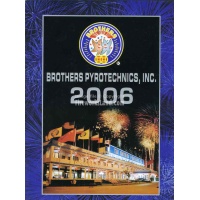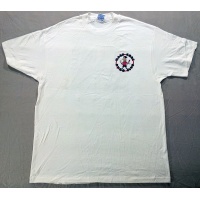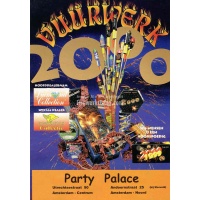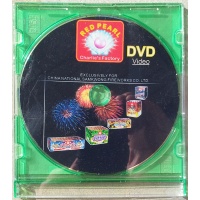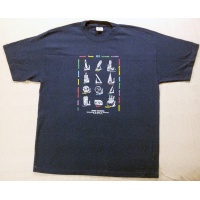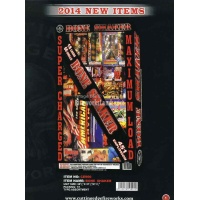This page has 3 sections: (1) A basic summary of the legal classifications of fireworks in the United States. (Other countries have their own classification systems.) (2) A link to summaries of the state fireworks laws of the individual states of the U.S. And (3) a summary of U.S. federal specifications for consumer fireworks. If you need the full details of the federal regulations, you can buy electronic copies of them at the APA web site. If you need the detailed regulations for a particular state, you can contact the office of the State Fire Marshal for that state.
Contents of this page are Copyright © Bob Weaver. For a list of types of fireworks go here.
| Class: | Large, professional fireworks | Small, consumer fireworks |
| Old name: | Special Fireworks | Common Fireworks |
| Old explosives class: | Class B | Class C |
| United Nations shipping category: | UN0335 | UN0336 |
| New name in United States: | 1.3G Fireworks or Display Fireworks |
1.4G Fireworks or Consumer Fireworks |
An exception to the table above involves a recent change to the classification of Display Fireworks. Aerial shells that are 8 inches or larger in diameter are now classified as 1.1G instead of 1.3G. That means different transportation and storage requirements for those.
You will probably still hear people say "Class C fireworks," as it is still commonly used, but it is now an obsolete term. Now, though, it is more correct to say "consumer fireworks" or "1.4 G fireworks." For the large professional fireworks used in public displays, call them "display Fireworks" or "1.3G fireworks" and you will be correct.
The "1.3" and "1.4" are Hazard Divisions in the explosives Class 1, and the "G" is the Compatability Group, which can range from A through L or N through S. The large professional fireworks are in the 1.3 hazard division, while the smaller consumer fireworks are in the 1.4 hazard division. The "G" is not an abbreviation for any word. It does not stand for "grams." It's the Compatibility Group that includes fireworks. If you want more information about it than this, you will have to dive into the "UN Transport of Dangerous Goods - Model Regulations 14 Ed., on Class 1 Explosives."
What determines whether a particular firework is 1.3G or 1.4G? In the United States, the exact specifications which divide 1.3G fireworks from 1.4G fireworks are found in these sections of the U.S. Code of Federal Regulations: 49 CFR 173.56, 27 CFR 55, and 16 CFR 1507.
The actual specifications for 1.4G consumer fireworks are contained within a rarely-seen document called APA Standard 87-1, which is maintained and published by the American Pyrotechnics Association. The federal laws simply reference that document, with regards to the actual limits on size, powder content and chemical restrictions. The APA sells electronic copies of that document for $60 to non-members. See this page. A summary of the limits for specific types of fireworks is in the table further down on this page.
If you're interested in reading exactly how the U.S. Consumer Products Safety Commission tests fireworks, you can download this manual.

"Safe and Sane" is a term used in some states of the U.S. to indicate a subset of Consumer Fireworks that can be sold in that state. For a more detailed explanation of "Safe and Sane", go to this page of my web site.
"Toy Trick Noisemakers" is yet another sub-category, possibly defined by the U.S. Department of Transportation, and by some states, to include such items as caps, party poppers and snappers. They are generally not considered "fireworks" and are sold almost everywhere in the U.S.
"Toy Smoke Devices" is another sub-classification by some states, in which items that produce smoke only are not considered "fireworks" and are thus legal to sell in some states that don't allow other "fireworks" to be sold.
State regulations
Individual states of the U.S. are allowed to pass laws that are more restrictive than the U.S. federal laws regarding consumer fireworks. For example, a state is allowed to ban the sale and use of consumer fireworks completely, or restrict the types that can be sold or used in that state. The various state laws change from time to time, so no definitive list is offered on this page.
To get the most current information on a particular state, click this to go to the American Pyrotechnic Association's State Law Directory, click on the state you are interested in, and download the PDF file, which will have a summary of that state's laws. The PDF file is only a summary, with the basic facts about that state. If you need the full details of that state's fireworks laws, contact the office of the State Fire Marshal of that state.
Most states also allow individual counties, cities and townships to further restrict or even ban the sale or use of fireworks. To find out the laws for a specific location, contact the Fire Marshal's office or fire department's office in that location.
Specifications for Consumer Fireworks (1.4G) in the United States
The regulations shown below are at the U.S. federal level. They are nominally contained in the Code of Federal Regulations at 49 CFR 173.56(j)(1). However, that regulation "incorporates by reference" a document called APA Standard 87-1, which is maintained and published by the American Pyrotechnics Association. That document is rarely seen by the public, but you can buy a copy of it at the APA web site.
The American Fireworks Standards Laboratory is a private, non-profit corporation that publishes its own set of voluntary standards, for both consumer and display fireworks. They are voluntary standards and are different standards from the federal laws. AFSL also provides testing and certification of compliance with the AFSL standards, and the information in their database is made available to U.S. agencies.
A summary the federal regulations Is listed below. This is not all there is to it. There are additional specifications for the physical design and construction of the various types of fireworks, but I don't have that information. There are also transportation and storage regulations. I can't say for sure how accurate or current the information below is, as I have not researched it in several years. If you need more accurate or up-to-date information than what is shown here, I would suggest contacting the American Pyrotechnic Association.
| Composition limits for 1.4G fireworks | |
| Fountains, Cone-type | |
| Fountains, Cylindrical | |
| Skyrockets or Missiles | |
| Helicopters | |
| Roman Candles | |
| Aerial Shells, Mines, Comets (contained in firing tube) | |
| Firecrackers or ground-based reports | |
| Any aerial report component | |
| Reloadable aerial shells (box with tube and shells) | 44 mm. diameter max. 12 shells per package max. 400 grams total per package |
| Aerial display shells, without launch tube, bulk | |
| Multiple-tube devices, dense-packed | |
| Multiple-tube devices, 500-gram | Must be on a base Tube separation of 13 mm between tubes |
| Wheels | 200 grams total composition |
| Ground Spinners | |
| Toy Smoke Devices | |
| Wire sparklers | |
| Chemicals alllowed in 1.4G fireworks | |
| Aluminum | |
| Ammonium Perchlorate | |
| Antimony | |
| Antimony Sulfide | |
| Barium Carbonate | |
| Barium Nitrate | |
| Barium Sulfate | |
| Bismuth Oxide | |
| Boric Acid | |
| Calcium Carbonate | |
| Calcium Sulfate | |
| Carbon or Charcoal | |
| Copper Metal | |
| Copper Oxide | Color Agent |
| Copper Salts (except Copper Chlorate) | |
| Dextrine | |
| Hexamethylenenetetramine (Hexamine) | |
| Iron and Iron Alloys (e.g., ferro/titanium) | |
| Iron Oxide | |
| Magnalium (Magnesium/Aluminum alloy) | |
| Magnesium Carbonate | |
| Magnesium Sulfate | |
| Nitrocellulose based lacquers | |
| Phosphorus, Red (only as provided in regulations) | |
| Potassium or Sodium Benzoate | |
| Potassium Bichromate (Potassium Dichromate) (not to exceed 5% of formulation) | |
| Potassium Chlorate (only as provided in regulations) | |
| Potassium Hydrogen Phthalate | |
| Potassium Nitrate | |
| Potassium Perchlorate | |
| Potassium Sulfate | |
| Silicon | |
| Sodium Bicarbonate (Sodium Hydrogen Carbonate) | |
| Sodium Nitrate | |
| Sodium Salicylate | |
| Sodium Salts (except Sodium Chlorate) | |
| Sodium Sulfate | |
| Strontium Carbonate | |
| Strontium Nitrate | |
| Strontium Salts (except Strontium Chlorate) | |
| Strontium Sulfate | |
| Sulfur | |
| Titanium (particle size must not pass through 100 mesh sieve) | |
| Miscellaneous compounds allowed | |
| Organic compounds (compounds such as lactose, shellac, red gum, chlorinated paraffin and polyvinyl chloride, consisting of some combination of carbon with hydrogen, oxygen and/or chlorine; nitrogen may be present if it accounts for less than 10% (by weight) of the compound.) | |
| Nitrocellulose containing greater than 10% nitrogen by weight is permitted as a propelling or expelling charge provided there is less than 15 grams of nitrocellulose per article. | |
| NOTE: Exact chemical identity of each "Organic compound" must be included when submitting an Approval Application to the U.S. DOT. |
| Chemicals prohibited in 1.4G consumer fireworks | |
| Arsenic sulfide, arsenates, or arsenites are prohibited | |
| Boron is prohibited | |
|
Chlorates are prohibited, except: a. In colored smoke mixtures in which an equal or greater weight of sodium bicarbonate is included |
|
| Gallates or gallic acid are prohibited | |
| Lead is prohibited, including lead tetroxide (red lead oxide) and other lead compounds | |
| Magnesium is prohibited (but magnesium/aluminum alloys, called magnalium, are permitted) | |
| Mercury salts are prohibited | |
| Phosphorus (red or white) is prohibited. (Red phosphorus is permissible in caps and party poppers) | |
| Picrates or picric acid are prohibited | |
| Thiocyanates are prohibited | |
| Titanium is prohibited, except in particle size that is too large to pass through a 100-mesh sieve | |
| Zirconium is prohibited |
Copyright © Bob Weaver. All rights reserved.

